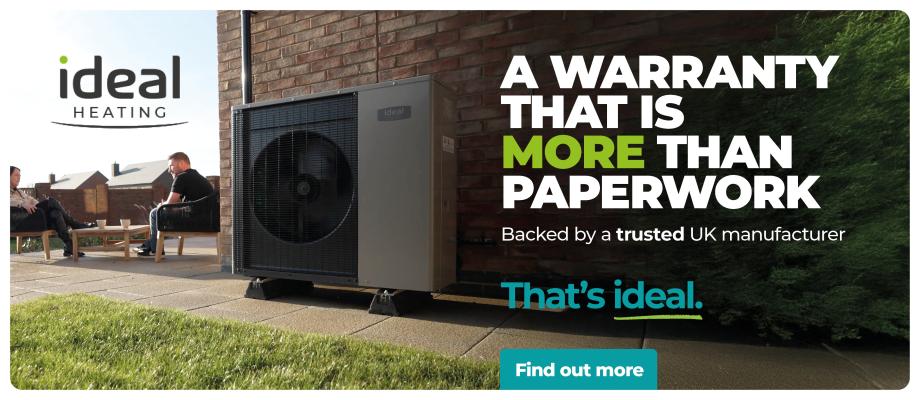When Britain began its post war building boom, coal was king and energy was relatively cheap, so little thought was given to heat loss and few buildings were constructed with any meaningful level of insulation.
Seventy years on and the world is very different. With sky-high heating costs and a greater focus on the need to reduce energy consumption, builders, landlords and homeowners all take the insulation of their properties much more seriously.
But before we look at insulation it’s important to understand what’s involved. Insulation in a building is introduced to provide resistance to heat flow. The more heat flow resistance the insulation provides, the lower the likely heating [and cooling] costs. Good levels of insulation not only reduce heating and cooling costs, but also improve comfort.

How Insulation Works
To understand how insulation works it helps to understand heat flow, which involves three basic mechanisms - conduction, convection, and radiation.
Conduction is the way heat moves through materials, such as when a spoon placed in a hot
cup of coffee conducts heat through its handle to your hand.
Convection is the way heat circulates through liquids and gases, and is why lighter, warmer air rises, and cooler, denser air sinks.
Radiant heat travels in a straight line and heats anything solid in its path that absorbs its energy – think about sitting in front of a roaring open fire and how you feel warm on the side facing the fire but less so on the other!
Insulation materials work by slowing conductive heat flow and to a lesser extent, convective heat flow. Regardless of the mechanism, heat flows from warmer to cooler areas until there is no longer a temperature difference. In a typical home, this means that in winter, heat flows directly from all heated living spaces to adjacent unheated roof voids, garages, cellars and particularly to the outdoors. Heat flow will also move indirectly through interior ceilings, walls, and floors, wherever there is a difference in temperature.
To maintain comfort, the heat lost in the winter must be replaced by heat from a central heating system or other means. Adequate levels of insulation will decrease this heat loss by providing an effective resistance to the conductive flow of heat.
How can we insulate effectively?
Retrospective insulation – that which is fitted after construction the building – has traditionally taken the form of thick layers of glass or mineral fibre placed between rafters in the roof void, or blown in cavity wall insulation such as styrene beads or mineral wool.
These forms of insulation work well but they do not significantly address the crucial factor of preventing convective heat loss.
In the UK, U-values are the measure of insulation’s ability to limit conductive heat flow - the lower the U-value the better the resistance to heat loss. However, it should be noted that up to 40% of a building’s heat loss can be attributed to air leakage.
Moisture vapour in the air within a building carries heat and moist humid air can support up to 4000 times more heat energy than dry air. As air leaks out of a building it carries with it this moisture vapour and with it, heat.
Therefore, the best way to increase the energy efficiency of a building is not merely to reduce U-values as required by Building Regs, but rather to combine U-value reduction with an air barrier – creating a “sealed box” effect to reduce air [and heat] leakage to a minimum.*
Spray applied insulation
Traditional forms of insulation are relatively inefficient in sealing the box, in that they cannot completely fill all voids or seal the interface between the insulation and the building structure. Nor can they cope with small structural movements which will often lead to air gaps, particularly in difficult to treat situations where access is poor and/or when voids are of complex geometry. This can lead to cold bridging and thermal by-pass, with the consequent risk of localised condensation and inevitable dampness.
Air leakage can be eliminated by the introduction of an air barrier. These can take many forms but must be installed with great care if they are to perform as desired. Real world experience also shows that the more difficult a component is to install, the less likely it is to be installed correctly!
The modern alternative is spray foam insulation, which is applied using a pressurised gun system. Here, foams are applied as a two-component mixture that come together at the tip of a gun forming a foam that expands 100-fold within seconds of application, sealing all gaps, service holes and hard to reach spaces, virtually eliminating cold bridging and air leakage.
When selecting spray applied insulation it is important to understand a number of factors: Unlike the urethane foams of 20 years ago, modern spray foams such as Icynene Foam Lite use water as the blowing agent. This means that the reaction between the two components produces CO2 which causes the foam to expand.
As Foam Lite expands, the cells of the foam burst and the CO2 is replaced by air. Consequently, from an environmental perspective, Icynene has a Global Warming Potential [GWP] of 1 and an Ozone Depletion Potential [ODP] of 0 [Zero]. Icynene does not, therefore emit and harmful gases once cured.
Open cell or closed cell composition
Spray foam insulation can be either open or closed cell in composition. Open cell is extremely vapour open and will allow moisture vapour to pass freely through it allowing the building to breathe naturally. Open cell foam will not soak up or “wick” water.
Closed cell foams tend to be much less vapour permeable than open cell and are considerably more rigid and hard. They resist the passage of liquid water and although not entirely waterproof, will prevent it from passing through a structure for a considerable period of time. Closed cell foams often have a greater thermal resistance than open cell foams.
Chlorofluorocarbons [CFCs], which were developed in the 1930s and frequently used in spray insulation many years ago, are recognised as the main cause of the ozone depletion. CFC's can last for 100 years and 1 CFC molecule can result in the loss of 100,000 ozone molecules. In light of this, when spray applied insulation is used it is important to verify that the material does not contain any chemicals that may potentially cause damage to the environment.
Where does spray applied insulation fit?
Spray applied insulation tends to be more expensive than conventional fibre based and rigid board type insulation materials and is usually applied by specialist contractors using bespoke equipment. However, its speed of installation, minimal waste and its ability to perform in difficult to treat applications and the fact that it can be injected into voids that would otherwise require invasive tear-out of surfaces, means spray foam is a cost-effective solution when compared to rigid board type insulation for both refurbishment and new build projects.
Open cell spray insulation has been used on many historic buildings where its non-invasive installation methods have allowed the continued occupation of the building with the minimal of disruption to users and negligible impact to the fabric or the breathability of the structure.
At the other end of the scale, the fact that spray foam insulation can create air-tight envelope has also made it the insulation material of choice in new build homes built to Passivhaus-type standards.
For further information on Icynene spray applied insulation: www.icynene.co.uk
*Footnote: As levels of air tightness increase, consideration should be given to the introduction of efficient mechanical ventilation
- Log in to post comments













